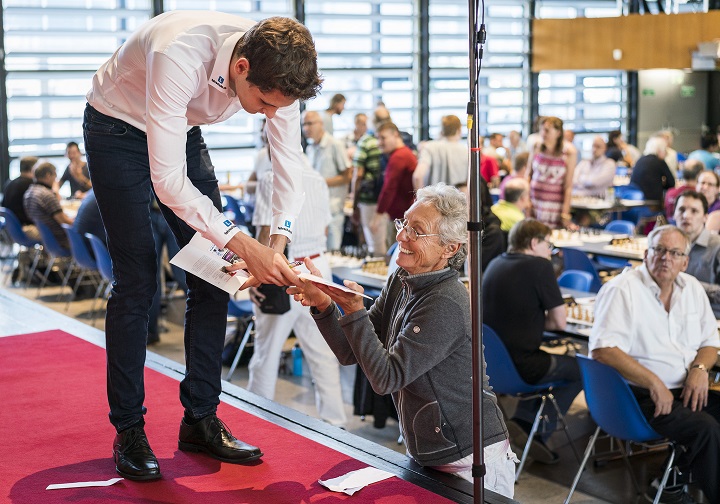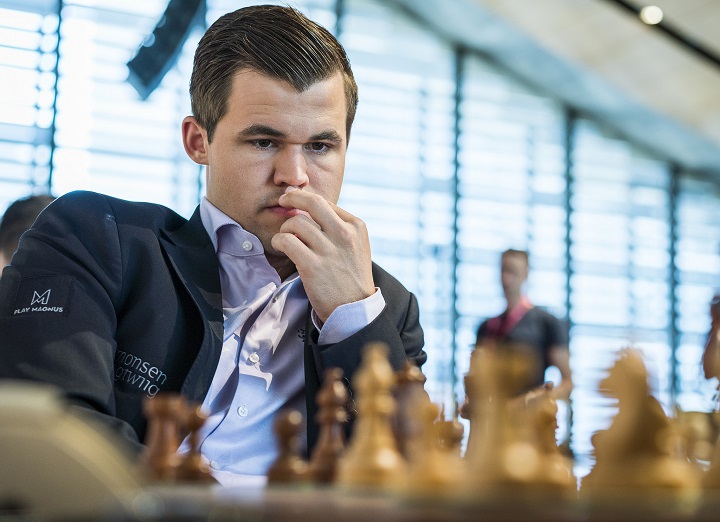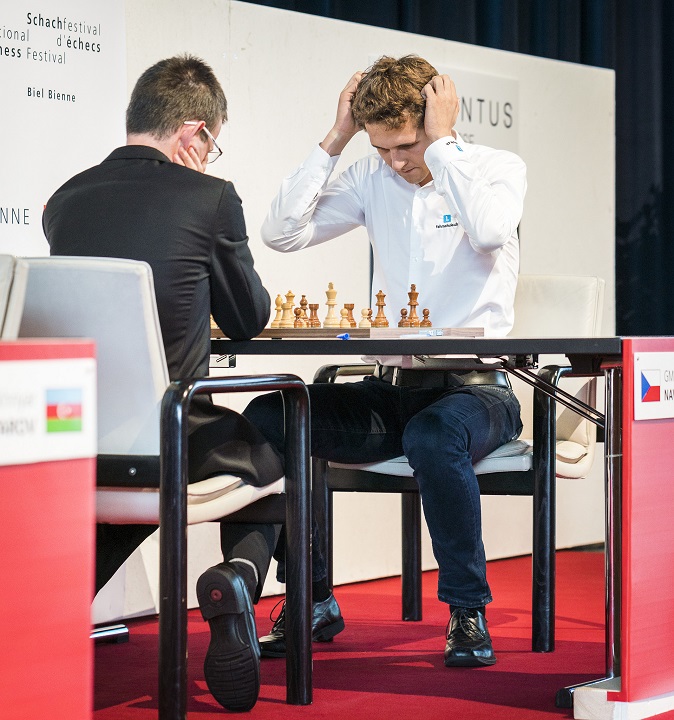


Chess News







After seven rounds, the Accentus Biel GM Tournament did not have Carlsen at the top but Mamedyarov. They both had Black on Monday — Svidler was Magnus' rival, while Shakhriyar played against Vachier-Lagrave.

Magnus is one point behind Mamedyarov with two rounds to go | Photo: Lennart Ootes / Biel International Chess Festival
In their first encounter, Carlsen tried a sharp variation against Svidler's Najdorf, but at the end could not get the full point. In the return game, the World Champion was looking for more than a draw despite having the black pieces. He chose the Open Defence against his opponent's 1.e4, and the position soon turned into an Anti-Berlin with 4.d3. After 14 moves, three pairs of minor pieces already had been exchanged.
Svidler continued with 15.O-O and Carlsen castled on the opposite flank a few moves later. The Norwegian opened the h-file, but the material was too scarce for there to be a real attack. Svidler got a d-pawn as counterplay and pushed it all the way to d7. Black's heavy pieces were too busy guarding the passer to create enough play, so the game ended in a draw after 36 moves.
Mikhail Golubev looked at some practical chances that Black could have used to create more problems to his opponent:

MVL recovered from a bad start in Switzerland | Photo: Lennart Ootes / Biel International Chess Festival
Another Open Variation was seen in the game that faced Vachier-Lagrave against Mamedyarov. Until the fifteenth move, the players followed a Klaus Durga - Bent Larsen game from 1953. The old masters were even younger than the players in Biel when they explored this position, as they were participating in the U20 World Championship.
Vachier-Lagrave continued with 16.Ng3, which deviated from Darga's 16.Ng5 — the German player defeated Larsen in that game. After 16...h6 17.Qe1 Mamedyarov could have followed with an immediate 17...e4, but chose 17...Bg4 instead. Black gained the initiative, but later had to deal with White's pair of bishops.
The tactical skirmish that followed was analysed in-depth by Golubev:

Looking for the win... | Photo: Lennart Ootes / Biel International Chess Festival
The last game to finish had a very different nature. Against Georgiadis' Nimzo-Indian, Navara chose a setup with a knight on e5 reinforced by a pawn on f4, a system used often by the Czech player.
In this position, Black can follow either with 11...cxd4 or 11...c4. The Swiss grandmaster chose 11...cxd4, and the players started fighting for the central squares. However, at some point, Navara established his bishop in the awkward a7-square. This gave Georgiadis the initiative, as White's pieces are clearly less coordinated.
Navara tried to defend the a7-bishop tactically with 30.Rxe4 dxe4 31.Bc4, but Black can play 31...Rxa7 anyway. Navara attacked the rook with 32.Qc5, threatening 33.Bxe6. With 32...Rd7 or 32...Ra4, Nico would have kept a clear advantage, but he went for 32...Rc7 and got himself in trouble on the c-file after 33.Rc1. White recovered the material and the game was drawn after 51 moves.
The curious battle was scrutinised by Mikhail Golubev:
Commentary by GM Daniel King and IM Anna Rudolf
Translation from German and additional reporting: Antonio Pereira